The changing American diet: Still far from an A+

Jorge Bach/CSPI.
How good is the average American’s diet? Let’s just say we haven’t exactly made the Honor Roll.
Big picture: In 1970, we consumed around 2,000 calories a day. Now we’re around 2,500. That’s according to the U.S. Department of Agriculture’s most recent estimates of what food companies and farmers produce (adjusted for waste, loss, imports, and exports).
No wonder 74 percent of adults and 35 percent of children now fall into the overweight or obese range.
What’s more, roughly 600 of our daily calories come from (mostly refined) grains and white potatoes, and 350 more come from added sugars. Together, that’s almost 4 out of every 10 calories we swallow.
To make matters worse, in 2011 the government stopped tracking most added fats and oils (which then supplied nearly a quarter of our calories) as well as rice. Odds are, the numbers haven’t changed drastically since then, but who knows?
Want to boost your grades? Start by filling half your plate with fruits and vegetables so there’s less room for the white stuff (flour, sugar, potatoes). Okay, class dismissed.

Meat, Poultry, Seafood

Chicken still rules, but beef has been inching up since 2015. (Sadly, it’s the food that most harms the environment.) Together, red meats (beef, pork, lamb, veal) edge out white meats (poultry, seafood), but just barely. We can do better to preserve our health and the planet.
Eggs, Nuts, Beans
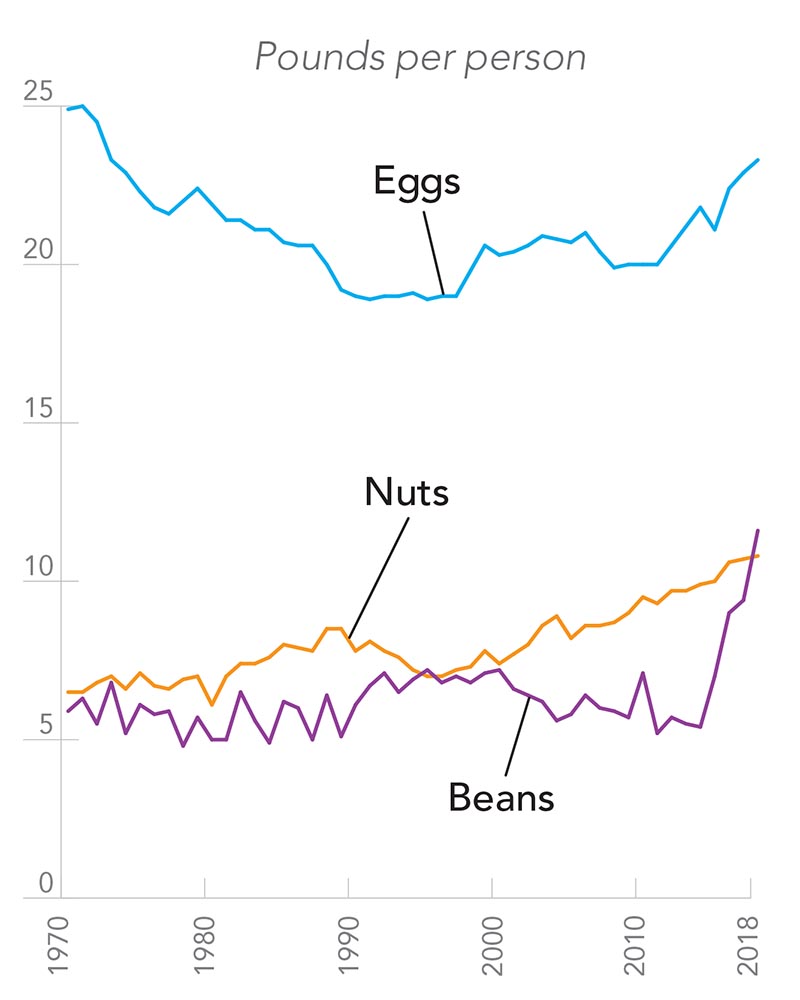
Eggs are making a comeback, despite advice from health authorities to not exceed one a day. The good news: nuts and beans (including split peas and lentils) are also up. The graph shows weights for dried beans. As eaten, they weigh two to three times more. Go plants
Cheese, Ice Cream, Yogurt

Cheese is still on a roll...and on nearly every sandwich, salad, burger, pasta, and, of course, pizza. Arteries, beware. Yogurt may have peaked after a 45-year climb. Full-fat ice cream is slipping, but it’s still ahead of lower-fat ice cream, which includes “lights” like Halo Top and Edy’s Slow Churned.
Grains

Wheat flour is down 10 percent from its 2000 peak, but refined grains are still too high. (The USDA lumps together white and whole wheat flour, but most is white, according to studies that ask people what they eat.) It hasn’t helped that restaurants serve oversized buns, bagels, burritos, muffins, pastas, pizza, cupcakes, cookies, pastries, etc. Corn flour is climbing, though it’s dwarfed by wheat. (Note the gap in the graph between 30 and 70 lbs.)
Added Sugars
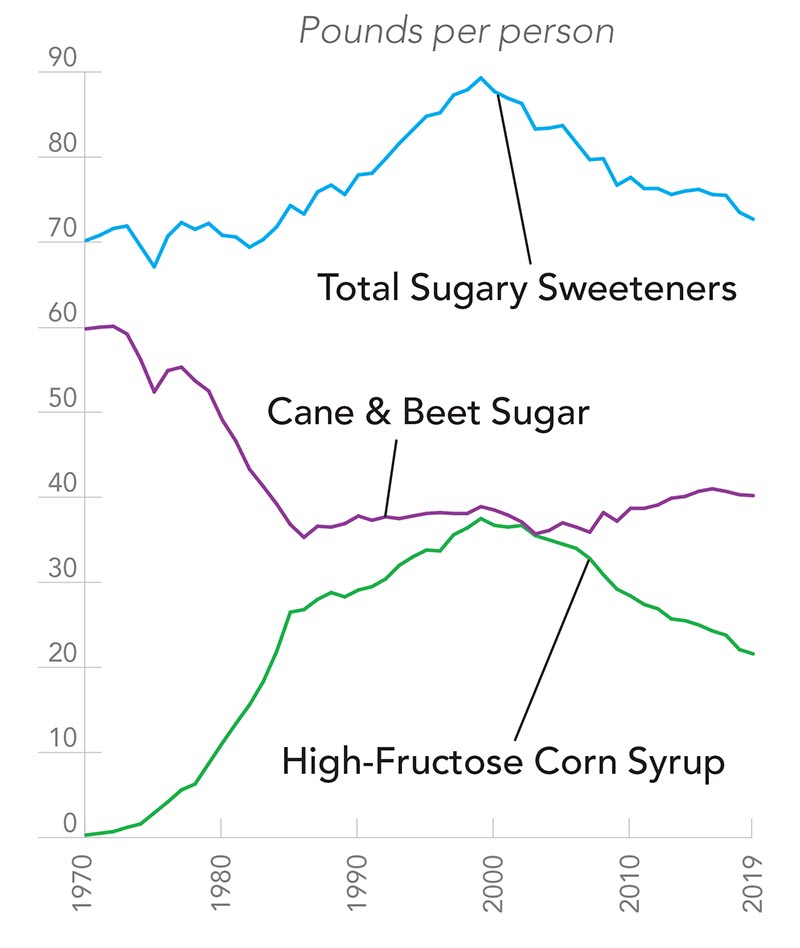
Overall, sugary sweeteners are down nearly 20 percent from their 1999 peak, and are closing in on their 1970 level. Most of the fall is due to a sharp decline in high-fructose corn syrup. But regular (cane and beet) sugar, as well as honey, agave, turbinado, etc., are no better for you. All are added sugars.
Added Fats & Oils
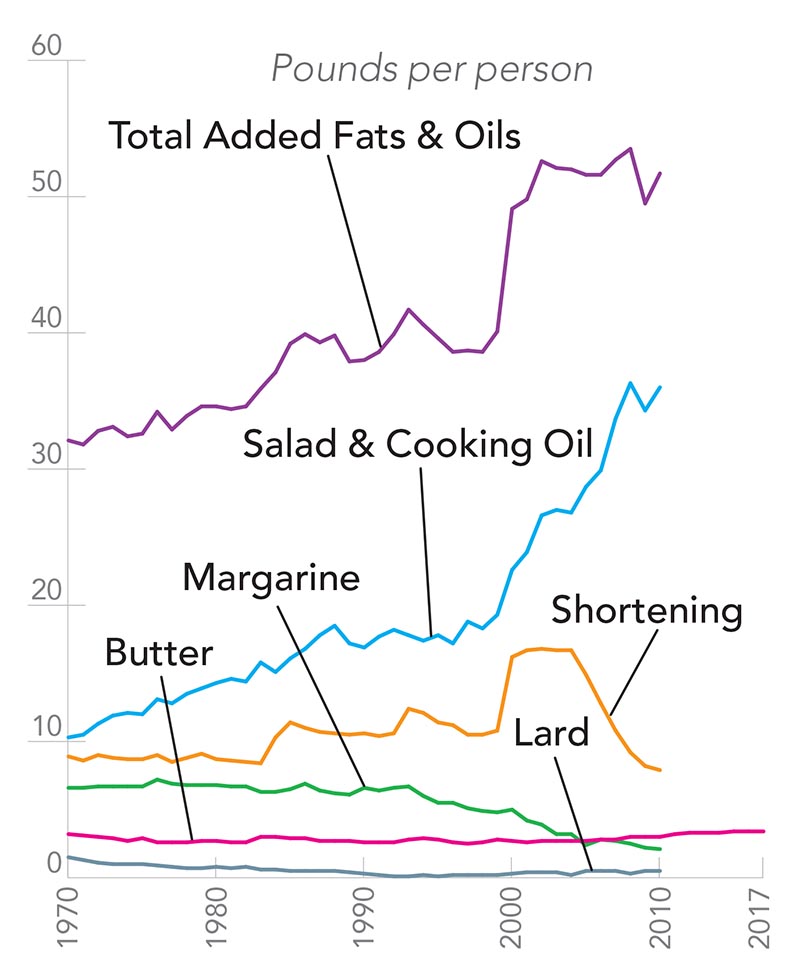
See that jump in total added fats in 2000? It’s due to more companies reporting that year. (The actual rise was likely more gradual.) That said, we never cut back on all added fats, as some people claim. Around 2005, we did start cutting shortening and margarine (maybe to avoid trans fats). Sadly, the government stopped collecting most added fats and oils data in 2011. Until that changes, we’re in the dark.
Fruits, Vegetables
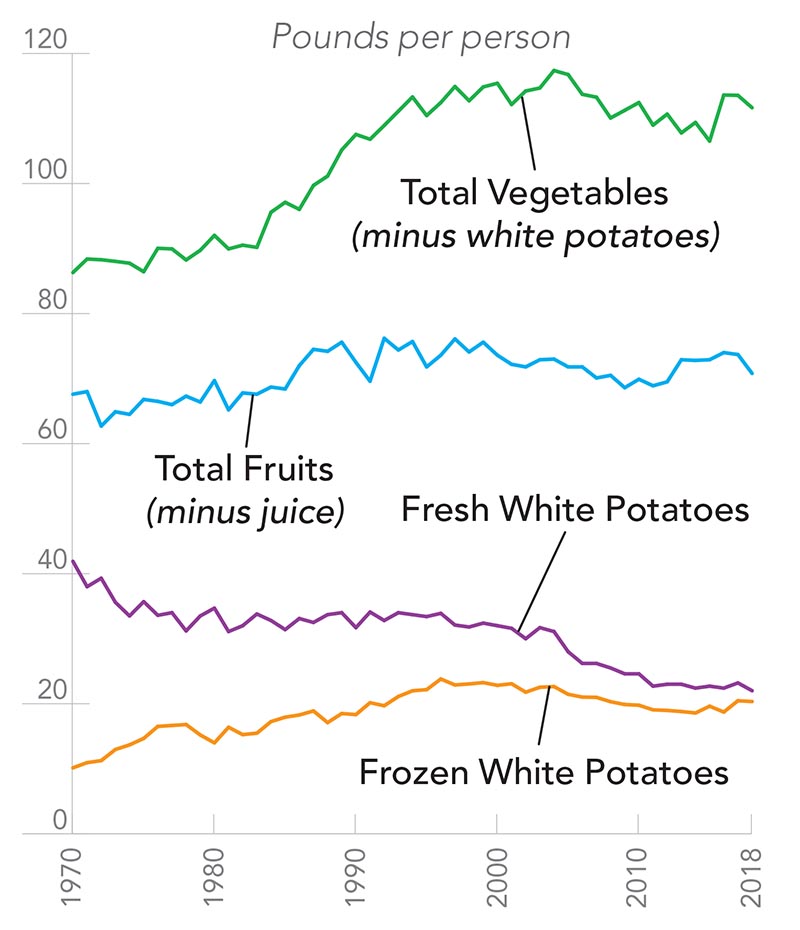
Fruits and vegetables have barely budged in decades. (That’s veggies without white potatoes, which are closer to white flour than to kale, and fruits without fruit juice, which is closer to soda than to blueberries.) Move over, meat. Make more room for the good stuff.
Milk
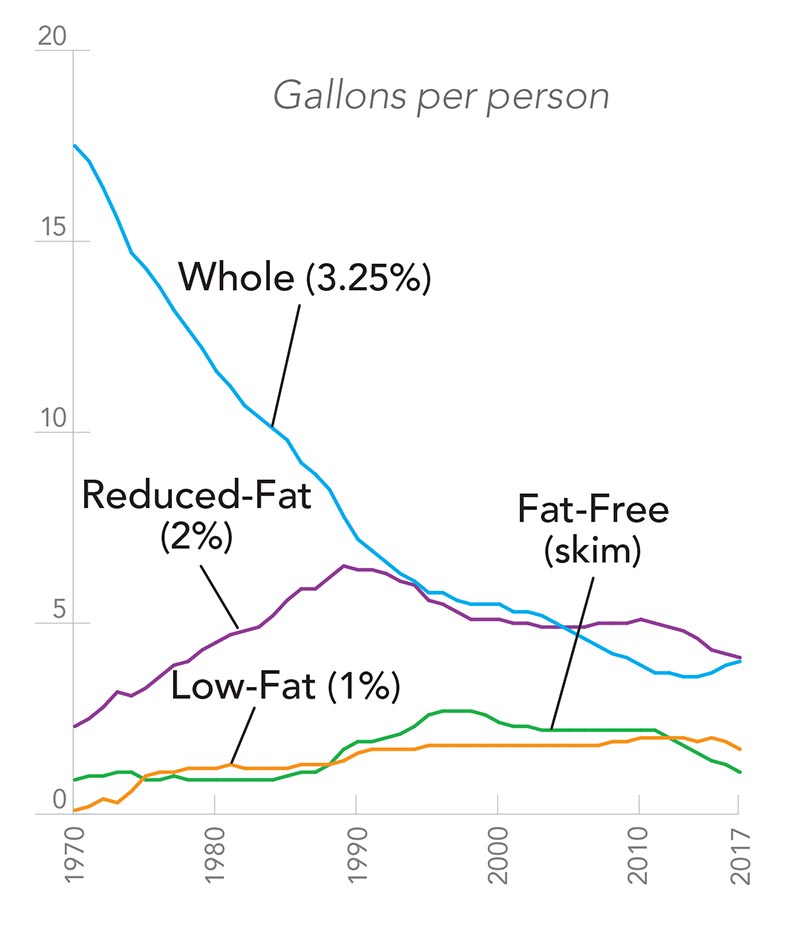
Whole milk is no longer in free fall. But most people have sensibly stuck to lower-fats, which make up two-thirds of the market. Total (cow’s) milk is down about 25 per cent since 2000. The growing popularity of plant milks may partly explain why.
Source: U.S. Department of Agriculture.

OUR HEALTHLETTER
Subscribe to Nutrition Action
Nutrition Action is completely independent. We accept no advertising and take no donations from corporations or the government. So we’re free to blow the whistle on dishonest or unhealthy supplements, foods, and restaurant menu items—and to applaud the good ones.

